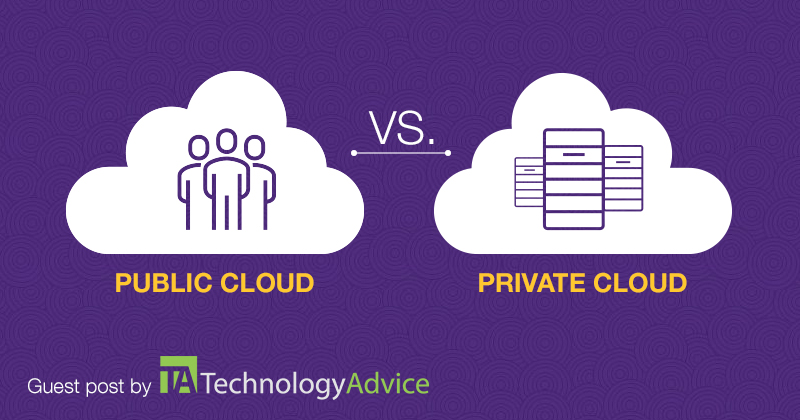Choosing Public vs. Private Cloud for Medical Software

Understanding the benefits of using a
cloud-based system
This is a guest blog post by Lisa C. Dunn of Technology Advice.
Did you know that a growing number of healthcare providers use some type of cloud solution today for data sharing and storage? In fact, the cloud–whether public or private–has become an essential component in the operation of most healthcare organizations today.
According to the “2017 Essentials Brief: Cloud” by the Healthcare Information and Management and Systems Society (HIMSS), 65 percent of study respondents use cloud computing. And the global adoption of cloud services in healthcare is expected to continue to grow from $3.73 billion back in 2015 to almost $9.5 billion by the year 2020, according to MarketsandMarkets.
Some of the reasons the healthcare industry continues to embrace the cloud include:
- Saving IT maintenance, hardware and staffing costs
- The ability to share information quickly across locations
- Not enough staff members to support on-site client-server systems
Those medical practices that have already transitioned to cloud computing realize the numerous benefits, including scalability and cost efficiencies. In addition, it is much easier to add and remove storage and tech solutions based on the ever-changing needs of the individual healthcare provider. The cloud also eases on-site infrastructure requirements, enhancing the cost savings.
The Cloud: A Deeper Dive
It may come as a surprise, but some healthcare administrators and providers are still puzzled about the full power of cloud computing. For those still unsure about deploying cloud technology, I will highlight some fundamentals below.
Public Cloud 101
For starters, the major differences between a public and a private cloud include where the data lives and how much on-site maintenance it requires.
While some people may immediately think ‘public’ when they hear the term cloud, the technology can actually be applied in many different ways, including private, public and hybrid models.
In general, medical providers should select models that best suit their particular requirements when it comes to flexibility, security and cost.
Often quicker to implement and resulting in a more cost-effective strategy, a public cloud can be used for applications that do not have strict security requirements. Public cloud storage doesn’t provide access to everyone, but rather several companies may share the same container, like an office building.
In a public cloud, a practice’s non-medical data may be stored alongside another company’s growing business intelligence software data storage. Neither company has access to the other’s data, but they might live in close proximity. Because you’re sharing space, public cloud vendors typically include ongoing maintenance costs in their lower subscription pricing.
However, before you dive in and select a vendor, check the essentials including the company’s profile, security practices, history and customer references.
Private Cloud 101
Alternatively, a private cloud gives healthcare providers more control over where their data lives and its accessibility to users. It also allows health IT staff to have more direct control over the contents they store in the cloud.
Most doctors prefer to have more control over their storage environment, which is why a private cloud is a popular option. This control can help organizations with business continuity, as well as deploy their own applications.
The private cloud also gives healthcare providers the opportunity to tailor their cloud environment, as well as the chance to increase mobility. The systems are flexible enough to adapt to meet changing needs, and you can access them virtually anywhere there is an internet connection.
Finally, the cloud can help to enable a medical practice to expand to new geographic locations without having to think about issues related to on-site server limitations.
Consider these additional factors. Private cloud can be ideal for a healthcare provider when the provider meets one or more of the following criteria:
- Has made major investments in data centers and health IT infrastructure across the care delivery system
- Is required to meet strict compliance and regulatory guidelines, as well as be transparent and auditable
- Has mission-critical applications
The Bottom Line
There is no question that cloud-based computing continues to grow by leaps and bounds, especially for those providers who want to keep pace. Cloud technologies are projected to triple in the healthcare market, as medical providers and patients continue to demand secure and affordable access to data.
By using private cloud solutions, healthcare companies have the opportunity to create an agile IT foundation that will not only help them to meet regulatory requirements but can also help streamline processes and help deliver enhanced patient care.
Healthcare organizations can set up a combination of a public and a private cloud for their data storage. However, understanding the fundamentals of each, along with the benefits and drawbacks, is important in helping an organization achieve its business goals in the end.
